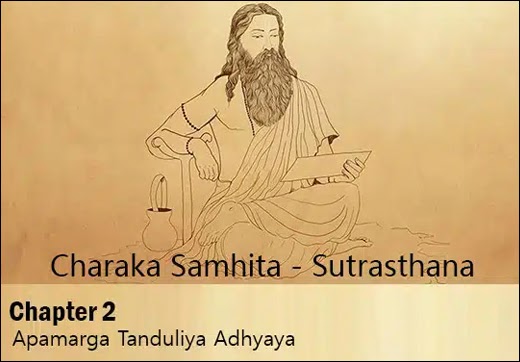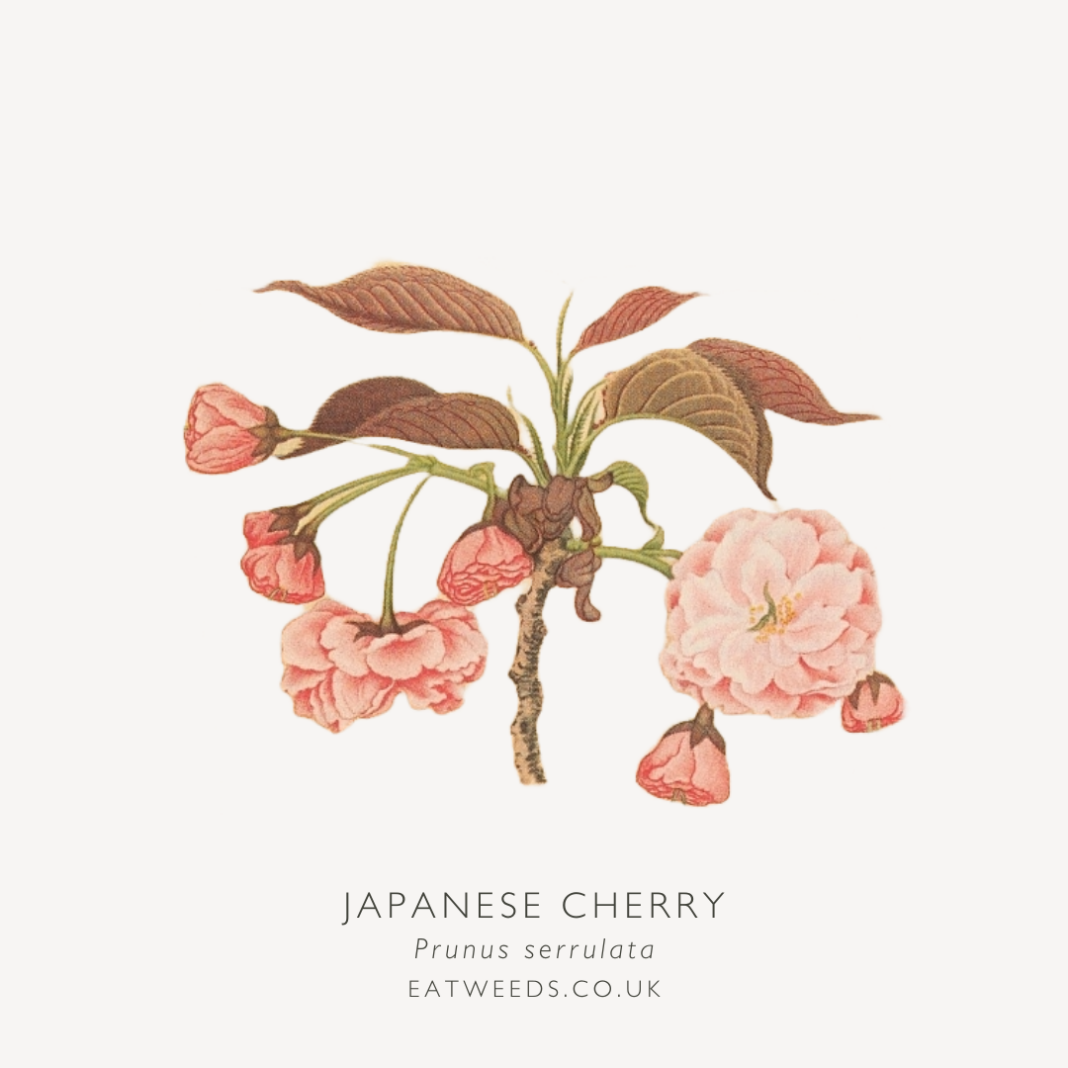Abstract
The Second Chapter of Charak Samhita Sutrasthana ‘Apamarga Tanduliya Adhyaya’. The main Aim of Ayurveda is to maintain the health of the healthy individual which cures disease, there are many purificatory procedures (panchkarma) which help remove toxins from the body. The Charak Samhita is a Sanskrit Text of Ayurveda. It is based on the Agnivesha Samhita. It includes the importance of diet, hygiene, and prevention and is well explained about the teamwork of physicians and Nurses in excellent health recovery. Charak Samhita states the context was first taught by Atreya who is then put into rules by Agnivesha and then revised by Charak. The Main Aim of life is Sukha (happy), Dukhayu (Unhappy), Hita (good) and Ahita (bad). This Text has 8 Sthana (books) and a total of 120 chapters and these eight books are-
Sutra Sthana (30 chapters) which includes the general principle, philosophy and the main goals of the text.
Nidana Sthana (8 chapters) are on the causes of diseases.
Vimana Sthana (8 chapters) tells you about the diet, nourishment and taste of medicines.
Sharira Sthana (8 chapters) which includes anatomy and embryology.
Indriya Sthana (12 chapters) which tells about diagnosis and prognosis.
Chikitsa Sthana (30 chapters) deals with medicines and treatment of the disease.
Kalpa Sthana (12 chapters) deals with poison and tells about the preparation and dosages of the medicines.
Siddhi Sthana (12 chapters) describes a cure sign with proper hygiene for healthy living.
The first written record of Ayurveda comes from the Atharva Veda which was written between 1200-1000 BCE. The main texts of Ayurveda are the Charak Samhita, Sushruta Samhita and The Bhela Samhita.
Introduction
The second chapter of Charak Samhita Sutrasthana is Apamarga Tanduliya Adhyaya. It suggests Apamarga is a herb which is commonly known as Prickly Chaff Flower, Tandula suggests De-husked Seeds. This chapter starts and states the explanation of the de-husked seeds of Apamarga.
Herbs Useful In Nasya (Shiro Virechana)
To treat the disease which is seen mainly in the head, Ear, Nose and Throat, so to eliminate the doshas from the head region in case of Headache, Rhinitis, Hemicrania (Single sided headache), Epilepsy, Infectious disease one should prescribe-
Seeds of Apamarga (Achyranthes aspera)
Pippali (Piper longum)
Maricha (Piper nigrum)
Mustard (Brassica nigra Kotch)
Ela (Elettaria cardamomum)
Kutheraka (Ocimum basilibum)
Lashuna (Allium sativum)
Ginger (Zingiber officinale)
Jyotishmati (Celastrus paniculatus)
Daruharidra (Berberis aristata)
Prithvika (Nigella sativa)
Haridra (Curcuma longa)
Surasa (Ocimum sanctum)
Pilu (Salvadora persica)
Aparajita (Clitoria ternatea)
Saindhava (Rock Salt)
Sauvarchala (Sonchal Salt)
Herbs Useful For Vamana (Emesis) Treatment
In gastrointestinal disorders, it is caused due to vitiation of Kapha and Pitta doshas so Vamana (Emesis) therapy is advised. There are various herbs which are useful in Emesis described as follows-
Madonna (Randia dumetorum)
Madhuka (Glycyrrhiza glabra)
Nimba (Azadirachta indica)
Jimuta (Luffa echinata)
Pippali (Piper longum)
Kutaja (Holarrhena antidysenterica)
Ikshvaku (Lagenaria siceraria)
Dhamargava (Luffa cylindrica)
Ela (Elettaria cardamomum)
Kirtavedhana (Luffa acutangula)
Herbs For Virechana (Purgation) Treatment
For Purgation, Trivit is the first drug of choice, it reaches the lower portion of Amashaya as Pittasaya and the impurity gets out of the body. Doshas means Pitta which can be mixed with Kapha and can be easily eliminated with Purgation. Here are the following purgative herbs described as follows-
Haritaki (Terminalia chebula)
Bibhitaki (Terminalia bellerica)
Danti (Baliospermum montanum)
Saptala (Acacia concinna)
Ksheerini (Mimusops hexandra)
Aragvadha (Cassia fistula)
Draksha (Vitis vinifera)
Dravanti (Jatropha glandulifera)
Nichula (Barringtonia acutangula)
Peelu (Salvadora persica)
Kampillaka (Mallotus philippinensis muell)
Vacha (Acorus calamus)
Herbs Useful In Asthapana-Anuvasana Basti
For Asthapana (a variety of enema with the use of kashayam) which cures Udavarta (bloating), Vibandha (constipation) and one gets to use these herbs as follows-
Patala (Stereospermum suaveolens)
Agnimantha (Clerodendrum phlomidis)
Bilva (Aegle marmelos)
Shyonaka (Oroxylum indicum)
Shalaparni (Desmodium gangeticum)
Prishniparni (Uraria picta)
Bala (Sida cordifolia)
Svadamstra (Tribulus terrestris)
Brihati (Solanum indicum)
Nidigdhika (Solanum xanthocarpum)
Eranda (Ricinus communis)
Guduchi (Tinospora cordifolia)
Madana (Randia dumetorum)
Katuuruna (Cymbopogon schoenanthus)
Kola (Zizyphus jujuba)
Palasha (Butea monospermum)
Punarnava (Boerhavia diffusa)
These drugs are prescribed for Anuvasna Basti (fat enema) which balances the imbalanced Vata doshas.
Importance Of Snehana And Swedana
Before performing the Panchkarma, Snehan (oleation treatment) and Swedana (Sudation) therapy which eliminates the doshas from the body. While performing the Panchkarma Treatment, the dose and the time of administration should be proper. The success of the treatment should be depending upon the efficient handling of the dose and time of the medicines.
Types Of Gruels And Their Indications
1. Panchakola Yavagu
The gruel which is prepared with
Panchkola – Pippali Fruit (Piper longum)
Pippali Moola (the root of Pippali)
Chavya (Piper chaba)
Chitraka (Plumbago zeylanica)
Nagara (Zingiber officinale)
It is helpful in stimulating digestion and cures various Abdominal colic pain.
2. Yavagu To Improve Digestion
Gruel which is prepared with
Dadhittha (Feronia limonia)
Bilva (Aegle marmelos)
Changeri (Oxalis corniculata)
Butter-Milk
Pomegranate (Punica granatum)
As these are carminative which improves digestion and absorbs moisture (Grahni), manages diarrhoea with Vata doshas.
3. Vatahara – Laghu Panchamoola Yavagu
Gruel of Shalaparni (Desmodium gangeticum)
Prishniparni (Uraria picta)
Brihati (Solanum indicum)
Kantakari (Solanum xanthocarpum)
Gokshura (Tribulus terrestris)
All these herbs are useful in the slaismika and Paittika Types of Diarrhoea.
4. Yavagu For Rakta Atisara
The liquid gruel of
Hribera (Pavonia odorata)
Utpala (Nymphaea alba)
Nagara (Zingiber officinale)
Prishniparni (Uraria picta)
This is prepared with semi-diluted Goat’s Milk which has half water and alleviates the bloody diarrhoea and then prepared with Prishniparni.
5. Yavagu For Ama Atisara
The gruel is prepared with Ativisha (Aconitum heterophyllum) and Nagara (Zingiber officinale) which are soured in pomegranate for diarrhoea which are having Ama doshas.
6. Yavagu For Dysuria
Gokshura (Tribulus terrestris) and Kantakari along with Phanita (a preparation along with sugarcane) can be given in dysuria.
7. Yavagu For Intestinal Worms
The gruel is prepared from Vidanga (Embelia ribes), Roots of Pippali (Piper longum), Shigru (Moringa oleifera) and Maricha which when mixed with Buttermilk and salted with Salt cures many types of infections.
8. Yavagu For Excessive Thirst
Gruel is prepared with Mrduveeka (Vitis vinifera), Sariva (Hemidesmus indicus), Fried Paddy, Pippali (Piper longum), Honey and Nagara (Zingiber officinale) which cures thirst.
9. Anti-Poisonous Yavagu
Gruel of Somaraji (Psoralea corylifolia) is anti-poisonous.
10. Nourishing Yavagu
The gruel which is prepared with pork juice is bulk-promoting and nourishing in nature.
11. Yavagu For Weight Loss
Gruel when prepared with fried Gavedhuka (Triticum aestivum) with honey is usually emaciating in nature.
12. Yavagu For Oleation
Gruel is prepared with profuse sesame seeds (Sesamum indicum) which when added with ghee and salt causes unctuousness and is highly oleating in nature.
13. Yavagu For Roughness
Gruel of Shyamaka (Punicum italicum) which when prepared with the extract of Kusha (Desmostachya bipinnata) and Amalaki (Emblica officinalis) causes roughness.
14. Dashmoola Yavagu
This is prepared from ten roots and the gruel is prepared with Bilwa (Aegle marmelos), Shyonaka (Oroxylum indicum), Gambhari (Gmelina arborea), Patala (Stereospermum suaveolens), Ganikarika (Clerodendrum phlomidis), Shalaparni (Desmodium gangeticum), Prishniparni (Uraria picta), Brihati (Solanum indicum), Kantakari (Solanum xanthocarpum), Gokshura (Tribulus terrestris) alleviates Cough, Hiccups, dyspnoea and diseases due to Kapha doshas.
15. Yavagu For Intestinal Pain
The One which is prepared with dual fat (ghee and Oil) along with Madira (wine) alleviates pain in the colon.
16. Yavagu For Bowel Evacuation
The Gruel which is prepared with Potherbs, Meat, Sesamum seeds (Tila) and Masha (Black gram) evacuates the bowel movements.
17. Astringent Yavagu
Gruel with the seeds of Jambu (Syzygium cumini) and Amra (Mangifera indica), Sour Dadhittha (Feronia limonia) and Bilva (Aegle marmelos) are astringent in nature.
18. Bhedani Yavagu
The gruel which is prepared with Yavakshara (Hordeum vulgare), Chitrak (Plumbago zeylanica), Hingu (Ferula narthex) and Amlavetasa (Rheum emodi) is mass-breaking which causes purgation.
19. Vata Anulomana Yavagu
The gruel is prepared with Abhaya (Terminalia chebula), Roots of Pippali (Piper longum) and Vishva (Zingiber officinale) which is helpful in the elimination of the Flatus.
20. Yavagu For Incorrect Intake Of Ghee, Oil
The gruel which is prepared with buttermilk relieved an untoward effect which is mainly caused due to intake of ghee (excessive intake). This one is prepared with buttermilk when mixed with oil cake to alleviate the defect which is caused due to intake of oil.
21. Yavagu For Irregular Fever
The gruel which is prepared with the extract of beef and is mixed with Pomegranate cures the fever.
22. Yavagu For Throat
The gruel which is prepared from Yava (barley) in ghee and Oil then boiled with Pippali (Piper longum) and Amalaki (Emblica officinalis) is useful for throat infection.
23. Yavagu For Seminal Passage
The gruel which is prepared in the juice of chicken alleviates the pain in the seminal passage.
24. Aphrodisiac Yavagu
The gruel which is prepared with Masha (black split dal) in ghee and milk acts as an Aphrodisiac.
25. Yavagu For Narcosis
The gruel which is prepared with Upodika and curd cures Narcosis.
26. Yavagu For Hunger
The gruel of Apamarga cooked with milk and juice of Iguana meat kills hunger.
Characteristics Of A Good Physician
Smrutiman – one has a good memory
Heu Yuktijna – Knows the appropriate causes of disease
Jitatma – Has excellent control over his sense organs and mind
Pratipattiman – Good presence of mind which is mentioned to practise medicine in combination with various herbs
Conclusion
The Second Chapter of Charak Samhita Sutrasthana ‘Apamarga Tanduliya Adhyaya’. The main Aim of Ayurveda is to maintain the health of the healthy individual which cures disease, there are many purificatory procedures (panchkarma) which help remove toxins from the body. Tandula means Dehusked seed and further, there are many herbs for various procedures such as Vamana, Virechana and several gruels (Yavagu) are explained in detail.

